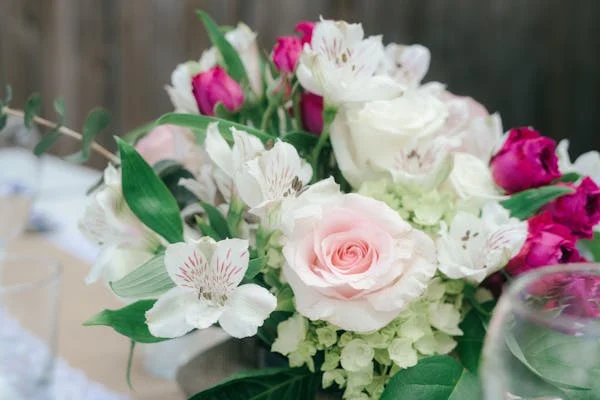When it comes to floral designs, many creations could be associated with the concepts of luxury and sophistication, and among all those creations, the posy flower occupies a rather unique position. Small, intricate arrangements have been adorning life’s milestones for at least 500 years, from the wedding ceremonies of kings and queens to simple moments of happiness. With such a history and the bloom’s versatility, the posy flower remains popular among flower lovers. This article will give you a brief guide about what is a posy flower, their history, meaning, and why they are still popular today.
What is a Posy flower: Origin & History
The history of the posy flower begins in the Middle Ages, when these tiny flowers, which form the composition of small bouquets known as posies, were used for aesthetics as well as functionality. Initially, the posy flowers were made to cover other unpleasant smells since antiseptics and personal cleanliness were not well developed in the present society. Some of these bouquets could be held very close to the nose, and natural-smelling flowers would be used to eliminate other unpleasant smells.
Nevertheless, the posy flower progressed from being just a functional item as follows:
Over some time, these little bouquets were associated with love and affection, ways of communicating with someone, and protection from illnesses. The Victorians brought the posy flower to another level, engendering an elaborate symbolism for each flower and its color.
What is a Posy flower bouquet
- A central focal flower: One is often accompanied by a rose or another proper flower with an apparent shape.
- Supporting flowers: secondary flowers that must be smaller but coordinated with the main focus flower
- Filler flowers or greenery: To incorporate density and body
- Binding: A band or keepsake for wrapping the stems, whereby the stems could be held together.
It is such a basic design, yet it allows for a great deal of freedom and imagination while remaining contained within the posy flower framework. Thus, lovers of flowers and florists can freely combine colors and plays of texture and fragrance while simultaneously keeping within the contours of the posy flower’s recognizable compact shape.
What is a Posy Flower Used for
The Victorian period was the sweetest for the posy flower, where it assumed a deeper symbolism than what was previously attributed to it. Floriography, or the use of flowers to deliver messages that could not be said out loud for various reasons, was developed into an art form. As we have seen, care was taken in picking a posy flower to bear a message, and hence, by selecting one of them, one could express love, sympathy, or even rejection.
Many cultural practices, protection, and good fortune are ascribed to posy flowers. The posy flowers were part the bouquet brides took to the altar, not for aesthetic value but due to their presumed qualities of protecting the bride against evil spirits and, thus, a happy marriage.
Posy flower arrangement
The posy flower has changed with the focus on the modern consumer and remains a popular gift form. Today, these charming bouquets continue to be popular for a variety of occasions, including:
i). Weddings:
Cocktail roses are great for bridal bouquets, particularly if the bride wants to avoid settling on the traditional floral bouquet or multiple blooms that give out a retro-looking bouquet.
ii). Gifts:
A posy flower is a very appropriate gift for any occasion, maybe a birthday, an anniversary, or just as an encouragement.
iii). Home decor:
Posy flowers are highly suited for use in event venues because of their small size. They do not overwhelm the venue with flowers yet add a natural feel.
iv). Personal accessories:
In the modern world, some fashion lovers have introduced posy flowers as accessories, whether they are pinned to the lapels or used in hairstyles.
The posy flower remains so popular nowadays: it is a charming and universal motif. These miniature bouquets may be purchased from a professional florist or made at home, and they all present an idea of nature’s beauty in a bottle.
What kind of flower is a posy.
Posy flowers are a notable advantage because everybody can make them, as they are home-crafted natural arrangements. Here’s a simple guide to crafting your posy flower:
- Choose your flowers: Choose flowers of different colors and sizes, as this will make the bouquet look more interesting. Remember to put something green or fillers in the arrangement.
- Prepare the stems: Cut the stems to the required level and remove any leaves that would be submerged in the flower container.
- Arrange the flowers: You should begin with the focal flower in the centre and then add other flowers, moving in circles.
- Add filler and greenery: For blank spaces, find smaller flowers or foliage to ensure a well-rounded look.
- Secure the arrangement: Secure it with floral tape or a ribbon, ensuring that the exposed part is long enough to be put in water.
- Finish with decoration: Tie a pretty ribbon or wrapper around the stems for that aesthetic appeal.
Learning to make one’s posy flower is quite enjoyable and entertaining, as you can alter it depending on the occasion or the room in which it will be placed.
In their day, posy flowers and many other fruits and flora were identified and named based on some rather distinct sounds and terms.
The message does not die out even if the set of contexts in which flower languages would still apply are rather formal or belong to the Victorian era. When creating or gifting a posy flower, consider the traditional meanings associated with different blooms:
- Roses: In love and passion
- Daisies: Most people’s perception of the movie is related to the themes of innocence and purity.
- Lavender: Devotion and grace are popular among young people.
- Rosemary: Remembrance
- Ivy: Who can be a firm and faithful friend?
When you have chosen the flowers you will use in your post, it is possible to bring a much deeper symbolism to your lovely work.
Blood Red Posies in Art and Poetry
The posy flower has been used as a motive in art and literature for a fairly long time. In paintings, especially the paintings and pictures of the Renaissance and Victorian Ages, posy flowers are often used to depict femininity, love, or the effect of smelling a flower. Delicate bouquets have played the part of a plot, a symbol, or a metaphor in literary works, including PlayStation and current romance literature.
This is why the posy flower, as a symbol of sentiment and idea transport, reached its apogee during the era of art and has remained an excellent instrument for creativity throughout history.
Preserving Posy Flowers
While the ephemeral nature of fresh flowers is part of their charm, there are ways to preserve posy flowers for longer enjoyment:
- Drying: The next step is to place the posy flower, ending down, in a cool and dry region to maintain the flower’s position and colour.
- Pressing: To flatten and dry individual flowers from the posy flower, place them between two heavy books, which will help achieve flat specimens.
- Resin casting: The best retention of the posy flower can be achieved by preserving the whole flower in clear resin for a more contemporary, long-lasting look.
Such preservation methods assist in preserving the elegance of a certain posy flower even when the real flowers are no longer fresh.
Conclusion: What is a Posy flower
The posy flower, which has a long history and a huge number of fans, has retained its popularity to the present day. What started as a functional product meant to rid people of bad smells, the posy flower has stood the test of time to become perhaps the most popular flower bouquet it is today.
FAQs
How long will posy flowers last?
Therefore, the life span of posy f lowers will depend on the type of flowers used and the kind of care given to them. Most posy flowers, if well cared for, should last up to 5-7 days after they have been picked.
What is required in the care of a posy flower?
Do not let your posy flower dry out; remove about half an inch of the stem every two or three days, and do not put the flower near a heat source or direct sunlight.


